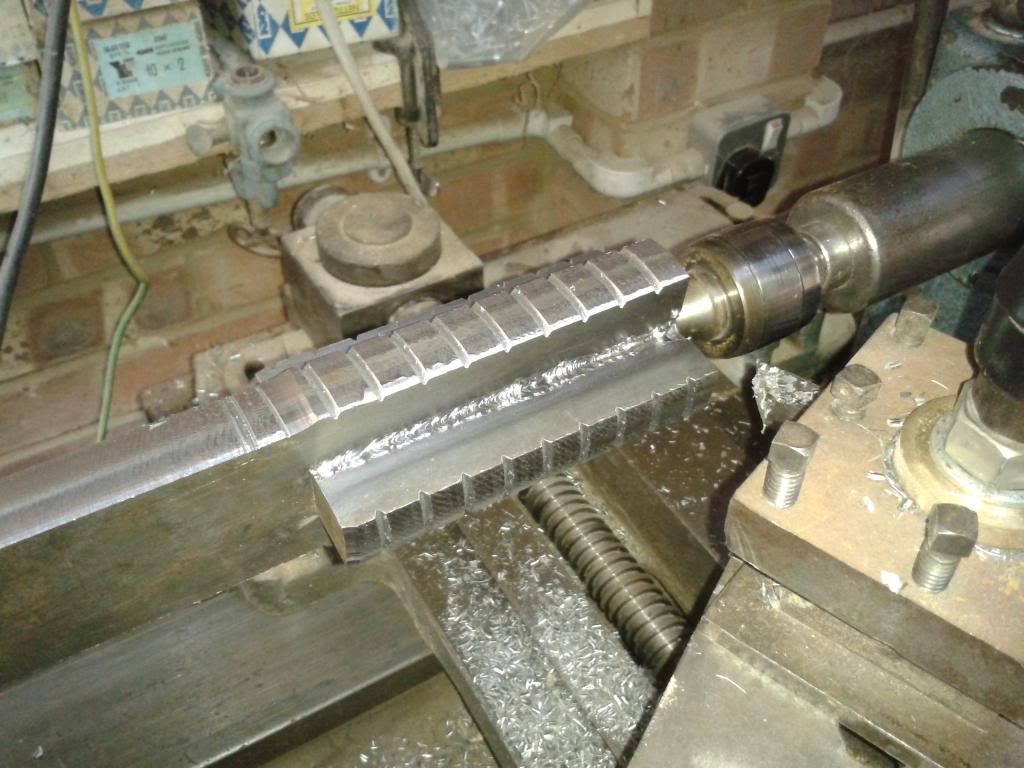katellwood
Established Member
As can possibly be seen from the following photo’s I am in desperate need of a new bench but other projects (more to follow) have prevented me from starting and continuing with a make do philosophy.
I’ve got the timber (Beech) but apart from a collection of record vices no other ironmongery or fittings
With the upsurge in Roubo styles benches hitting the market and ironmongery for the same being supplied for self builds by Benchcrafted, Maguire, Barron et al I thought I would have a go at producing some of my own.
Starting with two 12” x ¾ x 2 ½ pieces of mild steel (which I forgot to photograph) the following pics should be self-explanatory and comments or suggestions on how to improve will be greatly received





Turned down to 2 ½” dia then :-



Then the first try in a scrap of oak

And the external thread cut on the same lathe with a router mounted on the vertical slide


The first test with the internal thread cut in a scrap piece of English Cherry (after the thread hole was soaked with linseed oil overnight as suggested by Richard Maguire) and the external thread cut in a scrap piece of believed sepele (just what was kicking around the workshop)




I now intend to finish the tap off a little and create some sort of wrench to give me enough torque to create the holes easily
I also intend to case harden the tap so it lasts longer (but couldn’t resist in trying it out prior to hardening)
Thoughts, comments and suggestions welcomed.
I’ve got the timber (Beech) but apart from a collection of record vices no other ironmongery or fittings
With the upsurge in Roubo styles benches hitting the market and ironmongery for the same being supplied for self builds by Benchcrafted, Maguire, Barron et al I thought I would have a go at producing some of my own.
Starting with two 12” x ¾ x 2 ½ pieces of mild steel (which I forgot to photograph) the following pics should be self-explanatory and comments or suggestions on how to improve will be greatly received





Turned down to 2 ½” dia then :-



Then the first try in a scrap of oak

And the external thread cut on the same lathe with a router mounted on the vertical slide


The first test with the internal thread cut in a scrap piece of English Cherry (after the thread hole was soaked with linseed oil overnight as suggested by Richard Maguire) and the external thread cut in a scrap piece of believed sepele (just what was kicking around the workshop)




I now intend to finish the tap off a little and create some sort of wrench to give me enough torque to create the holes easily
I also intend to case harden the tap so it lasts longer (but couldn’t resist in trying it out prior to hardening)
Thoughts, comments and suggestions welcomed.































